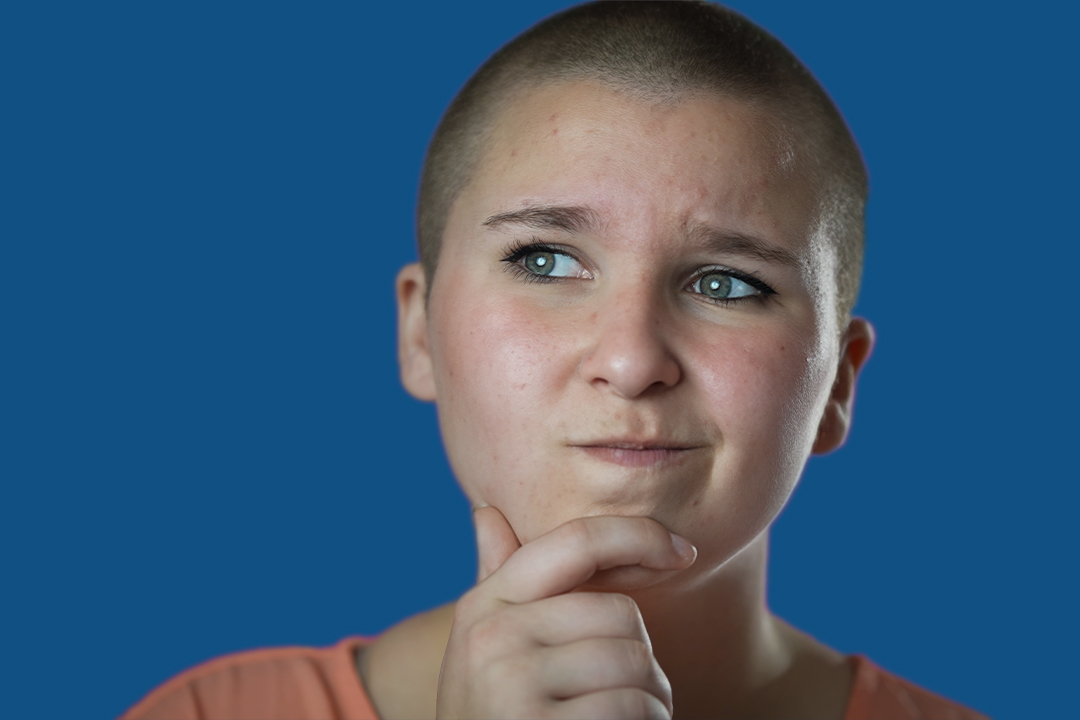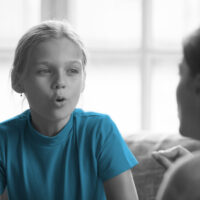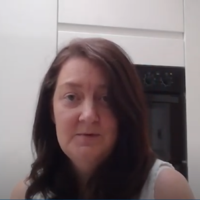Books
Murphy, T., Chowdhury, U. (2017) Tic Disorders: A Guide for Parents and Professionals. Jessica Kingsley Publishers
Martino, D. and Leckman, J. (2022). Tourette Syndrome, 2 edn Oxford Academic Press.
Verdellen, C., van de Griendt, J., Kriens, S. and van Oostrum, I. (2011) Tics: Therapist Manual. Amsterdam: Boom Publishers.
Woods. D., Piacentini, J., Chang, S.W., Deckersbach, T. et al. (2008) Managing Tourette Syndrome: A Behavioural Intervention for Children and Adults. Therapist Guide (Treatments That Work). Oxford University Press.
McKinley, D (2009) Nix Your Tics! Eliminating Unwanted Tic Symptoms: A How-To Guide for Young People J Can Acad Child Adolesc Psychiatry;18(4) 357-358. PMCID: PMC2765394.
Murphy, T. and Millar, D. (2019) The Tourettes Survival Kit: Tools for Young Adults with Tics.. Jessica Kingsley Publishers
Websites
Tourettes Action
Supports people with Tourette Syndrome, and those who work with them, and funds research into treatment and diagnosis.
OCD Action
Provide support and information to anybody affected by OCD, work to raise awareness of the disorder amongst the public and front-line healthcare workers, and strive to secure a better deal for people with OCD.
ADHD Foundation Neurodiversity Charity
The ADHD Foundation works in partnership with individuals, families, and professionals to improve the well-being, and life chances of people living with ADHD, ASD and related learning difficulties.
Anxiety UK
Works to relieve and support those living with anxiety and anxiety-based depression by providing information, support and understanding via an extensive range of services.
Tourette Scotland – a charity working exclusively in Scotland to support people living with TS
TTAG – Tics and Tourette Across the Globe is a global umbrella association representing Tics and Tourette Syndrome associations
ESSTS European Society for the Study of Tourette Syndrome
References
Andrén P, Aspvall K, Fernández de la CL, et al.: Therapist-guided and parent-guided internet-delivered behaviour therapy for paediatric Tourette’s disorder: a pilot randomised controlled trial with long-term follow-up. BMJ Open. 2019; 9: e024685.
Andrén P, Jakubovski E, Murphy TL, Woitecki K, Tarnok Z, Zimmerman-Brenner S, van de Griendt J, Debes NM, Viefhaus P, Robinson S, Roessner V, Ganos C, Szejko N, Müller-Vahl KR, Cath D, Hartmann A, Verdellen C. European clinical guidelines for Tourette syndrome and other tic disorders-version 2.0. Part II: psychological interventions. Eur Child Adolesc Psychiatry. 2022 Mar;31(3):403-423.
Andrén P, Holmsved M, Ringberg H, et al.: Therapist-Supported Internet-Delivered Exposure and Response Prevention for Children and Adolescents With Tourette Syndrome: A Randomized Clinical Trial. JAMA Netw. Open. 2022a; 5: e2225614.
Atkinson-Clement, C., Duflot, M., Lastennet, E. et al. How does Tourette syndrome impact adolescents’ daily living? A text mining study. Eur Child Adolesc Psychiatry (2022). https://doi.org/10.1007/s00787-022-02116-1
Bloch MH, Leckman JF. (2009) J Psychosom Res. 2009 Dec;67 (6):497-501. doi: 10.1016/j.jpsychores.2009.09.002).
Bloch MH, Peterson BS, Scahill L, Otka J, Katsovich L, Zhang H, Leckman JF. (2006) Adulthood outcome of tic and obsessive-compulsive symptom severity in children with Tourette Syndrome. Arch Pediatr Adolesc Med. Jan 160(1):65-9).
Brander G, Rydell M, Kuja-Halkola R, Fernández de la Cruz L, Lichtenstein P, Serlachius E, Rück C, Almqvist C, D’Onofrio BM, Larsson H, Mataix-Cols D. Perinatal risk factors in Tourette’s and chronic tic disorders: a total population sibling comparison study. Mol Psychiatry. 2018 May;23(5):1189-1197.
Cath DC, Hedderly T, Ludolph AG, Stern JS, Murphy T, Hartmann A, Czernecki V, Robertson MM, Martino D, Munchau A, Rizzo R; ESSTS Guidelines Group (2011). European clinical guidelines for Tourette syndrome and other tic disorders. Part I: assessment. Eur Child Adolesc Psychiatry. Apr;20(4):155-71. doi: 10.1007/s00787-011-0164-6.
Cavana AE, Servo S, Monaco F, Robertson MM: The behavioral spectrum of Gilles de la Tourette syndrome. J Neuropsychiatry Clin Neurosci 2009; 21:13-23. PubMed PMID: 19359447 DOI: 10.1176/jnp.2009.21.1.13
Cavanna, A. and Rickards, H. (2013). The psychopathological spectrum of Gilles de la Tourette syndrome. Neuroscience & Biobehavioral Reviews. 37, 6, 1008-1015.
Chowdhury, U. and Murphy, T. (2017). Tic Disorders: A Guide for Parents and Professionals. Jessica Kingsley Publishers, London.
Eddy, C. M., & Cavanna, A. E. (2014). Tourette syndrome and obsessive compulsive disorder: compulsivity along the continuum. Journal of Obsessive-Compulsive and Related Disorders, 3(4), 363-371. https://doi.org/10.1016/j.jocrd.2014.04.003
Felling R.J. and Singer H. S (2011). Neurobiology of Tourette Syndrome: Current status and need for further investigation. Journal of Neuroscience, 31, 35, 12387-12395.
Fernandez de la Cruz, L; Rydell, M; Runeson, B; Brander, G; Ruck, C; D’Onofrio, BM; Larsson, H; Lichtenstein, P; Mataix-Cols, D Suicide in Tourette’s and Chronic Tic Disorders. Biological Psychiatry July 15, 2017 Volume 82, Issue 2, Pages 111–118
Ganos C, Ogrzal T, Schnitzler A, Münchau A. The pathophysiology of echopraxia/echolalia: relevance to Gilles de la Tourette syndrome. Mov Disord. 2012 Sep 1;27(10):1222-9. doi: 10.1002/mds.25103. Epub 2012 Jul 17. PMID: 22807284.
Gilbert DL: Inflammation in Tic Disorders and Obsessive-Compulsive Disorder: Are PANS and PANDAS a Path Forward?. J. Child Neurol. 2019;34:598–611.
Girgis, J., Pringsheim, T. Prenatal Risk Factors for Tourette Syndrome: a Systematic Review Update. Curr Dev Disord Rep 7, 258–269 (2020). https://doi.org/10.1007/s40474-020-00217-7
Groth C, Mol Debes N, Rask CU, Lange T, Skov L (2016). Course of Tourette Syndrome and Comorbidities in a Large Prospective Clinical Study. J Am Acad Child Adolesc Psychiatry. 2017 Apr;56(4):304-312. doi: 10.1016/j.jaac.2017.01.010. Epub 2017 Feb 2.
Hartmann A, Andrén P, Atkinson-Clement C, Czernecki V, Delorme C, Debes NM, Szejko N, Ueda K, Black K. Tourette syndrome research highlights from 2021. F1000Res. 2022 Jun 29;11:716. doi: 10.12688/f1000research.122708.2. PMID: 35923292; PMCID: PMC9315233.
Hollis C, Hall CL, Jones R, Marston L, Novere ML, Hunter R, Brown BJ, Sanderson C, Andrén P, Bennett SD, Chamberlain LR, Davies EB, Evans A, Kouzoupi N, McKenzie C, Heyman I, Khan K, Kilgariff J, Glazebrook C, Mataix-Cols D, Murphy T, Serlachius E, Murray E. Therapist-supported online remote behavioural intervention for tics in children and adolescents in England (ORBIT): a multicentre, parallel group, single-blind, randomised controlled trial. Lancet Psychiatry. 2021 Oct;8(10):871-882. doi: 10.1016/S2215-0366(21)00235-2.
Hollis C; Pennant M; Cuenca J; Glazebrook C; Kendall T; Whittington C; Stockton S; Larsson L; Bunton P; Dobson S; Groom M; Hedderly T; Heyman I; Jackson GM; Jackson S; Murphy T; Rickards H; Robertson M; Stern J (2016). Clinical effectiveness and patient perspectives of different treatment strategies for tics in children and adolescents with Tourette syndrome: a systematic review and qualitative analysis. Health Technology Assessment, No. 20.4
Iverson AM, Arbuckle AL, Song DY, Bihun EC, Black KJ. Median Nerve Stimulation for Treatment of Tics: A 4-Week Open Trial with Ecological Momentary Assessment. J Clin Med. 2023 Mar 28;12(7):2545. doi: 10.3390/jcm12072545. PMID: 37048629; PMCID: PMC10095435.
Iverson AM, Black KJ. Why Tic Severity Changes from Then to Now and from Here to There. Journal of Clinical Medicine. 2022; 11(19):5930. https://doi.org/10.3390/jcm11195930
Katz TC, Bui TH, Worhach J, Bogut G, Tomczak KK. Tourettic OCD: Current understanding and treatment challenges of a unique endophenotype. Front Psychiatry. 2022 Jul 27;13:929526. doi: 10.3389/fpsyt.2022.929526. PMID: 35966462; PMCID: PMC9363583.
Khalifa, N. and von Knorring, A.L (2005) ‘Tourette Syndrome and other tic disorders in a total population of children: Clinical assessment and background.’ Acta Paediatrica 94, 11, 1680 – 1614
Kobierska M, Sitek M, Gocyła K, Janik P. Coprolalia and copropraxia in patients with Gilles de la Tourette syndrome. Neurol Neurochir Pol. 2014 Jan-Feb;48(1):1-7.
Kurlan R: Methylphenidate to treat ADHD is not contraindicated in children with tics. Movement Disorders 17:5–6, 2002. DOI: 10.1002/mds.10094
Lewin, A.B., Storch, E.A., Conelea, C.A., Woods, D.W. et al. (2011) ‘The roles of anxiety and depression in connecting tic severity and functional impairment.’ Journal of Anxiety Disorders 25, 164-168
Ludlow, A.K., Cutler, A. and Keville, S. (2022), British teachers’ knowledge and awareness of Tourette syndrome in children attending mainstream school. J Res Spec Educ Needs, 22: 323-331. https://doi.org/10.1111/1471-3802.12570
Ludlow AK, Anderson S, Hedderly T, Black KJ, Conelea CA. Editorial: Recent advances in understanding Tourette syndrome, tic disorders and functional tics. Front Psychiatry. 2023 Mar 30;14:1185489. doi: 10.3389/fpsyt.2023.1185489. PMID: 37065882; PMCID: PMC10098342.
Malli MA, Forrester-Jones R, Murphy G. Stigma in youth with Tourette’s syndrome: a systematic review and synthesis. Eur Child Adolesc Psychiatry. 2016 Feb;25(2):127-39.
Martino D, Schrag A, Anastasiou Z, et al.: Association of Group A Streptococcus Exposure and Exacerbations of Chronic Tic Disorders: A Multinational Prospective Cohort Study. Neurology. 2021;96:e1680–e1693.
Morera Maiquez B, Sigurdsson HP, Dyke K, Clarke E, McGrath P, Pasche M, Rajendran A, Jackson GM, Jackson SR. Entraining Movement-Related Brain Oscillations to Suppress Tics in Tourette Syndrome. Curr Biol. 2020 Jun 22;30(12):2334-2342.e3. doi: 10.1016/j.cub.2020.04.044. Epub 2020 Jun 4. PMID: 32502412; PMCID: PMC7308804.
Morera, Barbara & Smith, Caitlin & Dyke, Katherine & Chou, Chia-Ping & Kasbia, Belinda & McCready, Ciara & Wright, Hannah & Jackson, Jessica & Farr, Isabel & Badinger, Erika & Jackson, Georgina & Jackson, Stephen. (2023). A double-blind, sham-controlled, trial of home-administered rhythmic 10-Hz median nerve stimulation for the reduction of tics, and suppression of the urge-to-tic, in individuals with Tourette syndrome and chronic tic disorder. Journal of neuropsychology. 17. 10.1111/jnp.12313.
Müller-Vahl, Kirsten & Pisarenko, Anna & Szejko, Natalia & Haas, Martina & Fremer, Carolin & Jakubovski, Ewgeni & Musil, Richard & Münchau, Alexander & Neuner, Irene & Huys, Daniel & Elst, Tebartz & Schröder, Christoph & Ringlstetter, Rieke & Koch, Armin & Jenz, Eva & Anika, Grosshennig. (2023). CANNA-TICS: Efficacy and safety of oral treatment with nabiximols in adults with chronic tic disorders -Results of a prospective, multicenter, randomized, double-blind, placebo controlled, phase IIIb superiority study. 323. 115135. 10.1016/j.psychres.2023.115135.
Müller-Vahl, Kirsten & Pisarenko, Anna & Fremer, Carolin & Haas, Martina & Jakubovski, Ewgeni & Szejko, Natalia. (2023). Functional tic‐like behaviors: a common comorbidity in patients with Tourette syndrome. Movement Disorders Clinical Practice. 10.1002/mdc3.13932.
Nilles C, Martino D, Fletcher J, et al.: Have We Forgotten What Tics Are? A Re-Exploration of Tic Phenomenology in Youth with Primary Tics. Mov. Disord. 2023; 10: 764–773.
Nixon E, Glazebrook C, Hollis C, Jackson GM. Reduced Tic Symptomatology in Tourette Syndrome After an Acute Bout of Exercise: An Observational Study. Behav Modif. 2014 Mar;38(2):235-63. doi: 10.1177/0145445514532127. Epub 2014 Apr 28. PMID: 24778432.
Nussey, Pistrang and Murphy, (2013). How does psychoeducation help? A review of the effects of providing information about Tourette Syndrome and attention-deficit/hyperactivity disorder. Child: Care, Health and Development, 39, 617-627.
Pappert EJ, Goetz CG, Louis ED, Blasucci L, Leurgans S. (2003) Objective assessments of longtidudinal outcome in Gilles de la Tourette Syndrome. Neurology Oct 14; 61 (7): 936-40.
Piedad JC, Cavanna AE. Depression in Tourette syndrome: A controlled and comparison study. J Neurol Sci. 2016 May 15;364:128-32.
Pringsheim T, Okun MS, Müller-Vahl K, Martino D, Jankovic J, Cavanna AE, Woods DW, Robinson M, Jarvie E, Roessner V, Oskoui M, Holler-Managan Y, Piacentini J. Practice guideline recommendations summary: Treatment of tics in people with Tourette syndrome and chronic tic disorders. Neurology. 2019 May 7;92(19):896-906. doi: 10.1212/WNL.0000000000007466. PMID: 31061208; PMCID: PMC6537133.
Pringsheim T, Ganos C, Nilles C, Cavanna AE, Gilbert DL, Greenberg E, Hartmann A, Hedderly T, Heyman I, Liang H, Malaty I, Malik O, Debes NM, Vahl KM, Munchau A, Murphy T, Nagy P, Owen T, Rizzo R, Skov L, Stern J, Szejko N, Worbe Y, Martino D. European Society for the Study of Tourette Syndrome 2022 criteria for clinical diagnosis of functional tic-like behaviours: International consensus from experts in tic disorders. Eur J Neurol. 2023 Apr;30(4):902-910. doi: 10.1111/ene.15672. Epub 2023 Jan 13. PMID: 36587367.
Reese HE, Scahill L, Peterson AL, Crowe K, Woods DW, Piacentini J, Walkup JT, Wilhelm S. The premonitory urge to tic: measurement, characteristics, and correlates in older adolescents and adults. Behav Ther. 2014 Mar;45(2):177-86.
Reilly C, Grant M, Bennett S, Murphy T, Heyman I.(2019) Review: Physical exercise in Tourette syndrome – a systematic review. Child Adolesc Ment Health. 2019 Feb;24(1):3-11. doi: 10.1111/camh.12263. Epub 2018 Feb 28. PMID: 32677234.
Ricketts EJ, Wolicki SB, Holbrook JR, et al.: Clinical Characteristics of Children With Tourette Syndrome With and Without Sleep Disorder. Pediatr. Neurol. 2022c; 141: 18–24
Roessner V, Eichele H, Stern JS, Skov L, Rizzo R, Debes NM, Nagy P, Cavanna AE, Termine C, Ganos C, Münchau A, Szejko N, Cath D, Müller-Vahl KR, Verdellen C, Hartmann A, Rothenberger A, Hoekstra PJ, Plessen KJ. European clinical guidelines for Tourette syndrome and other tic disorders-version 2.0. Part III: pharmacological treatment. Eur Child Adolesc Psychiatry. 2022 Mar;31(3):425-441.
Scharf. J., Miller L.L., Mathews, C.A., Ben-Shlomo, Y. (2012). Prevalence of Tourette Syndrome and Chronic Tics in the Population-Based Avon Longitudinal Study of Parents and Children Cohort. Journal of the American Academy of Child and Adolescent Psychiatry, 51, 2, 192-201.
Stern, J. S. (2018). Tourette’s syndrome and its borderland. Practical Neurology Published Online First: 10.
Taylor E, Anderson S, Davies EB: I’m in pain and I want help: An online survey investigating the experiences of tic-related pain and use of pain management techniques in people with tics and tic disorders. Front. Psych. 2022; 13: 914044.
Tourette’s Syndrome Study Group: Treatment of ADHD in children with tics: a randomized controlled trial. Neurology 58:527–536, 2002. DOI: 10.1212/WNL.58.4.527
Wang N, Qin DD, Xie YH, Wu XC, et al.: Traditional Chinese Medicine Strategy for Patients with Tourette Syndrome Based on Clinical Efficacy and Safety: A Meta-Analysis of 47 Randomized Controlled Trials. Biomed Res Int. 2021; 2021: 6630598








